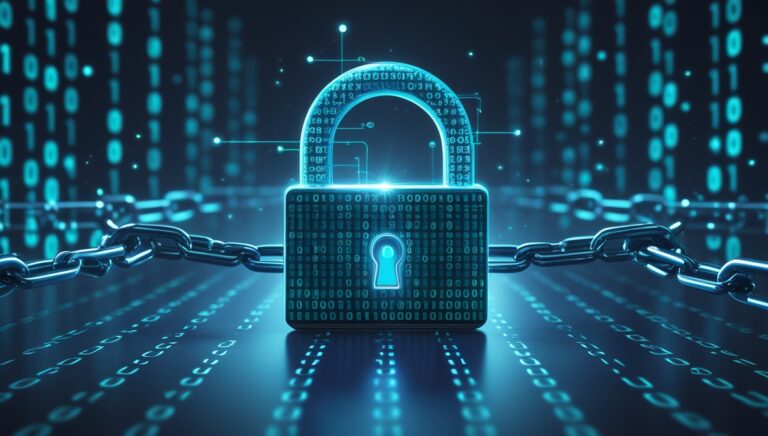Global supply chains keep modern business moving. But the systems that connect manufacturers, vendors, and distributors are under pressure.
Rising geopolitical tension, digital transformation, and growing regulatory demands have exposed new weaknesses.
Supply chain security is no longer about efficiency alone. It is now about resilience, visibility, and control.
Growing Complexity Increases Exposure
Supply chains have become larger and more connected. Every supplier, contractor, and logistics provider adds new risk.
Many companies rely on hundreds of third parties. Few have full visibility into where data is stored, who has access to it, or how it is protected.
A single weak vendor can expose the entire chain. For example, a software supplier with poor patch management can open a path for attackers to move across networks.
Attacks like SolarWinds showed how one compromised supplier can affect thousands of organizations. The larger the supply network, the harder it becomes to secure.
The solution starts with mapping dependencies. Companies need to know who their suppliers are, what data they handle, and how critical they are to operations.
Regular risk assessments, audits, and clear security standards must follow. Without these steps, blind trust replaces informed oversight.
Cyberattacks Target Weak Links
Hackers now view suppliers as the easiest way to reach large targets. Instead of attacking a global enterprise directly, they exploit smaller vendors with weaker defenses.
Ransomware groups, state actors, and organized criminals are using this method to infiltrate high-value networks.
Third-party software updates are a common entry point. Attackers insert malicious code into trusted applications.
Once the update installs, the code runs inside the victim’s network. This method bypasses traditional defenses because the software appears legitimate.
Human error adds another layer of risk. Phishing, poor password practices, and insecure remote access remain common.
A single compromised account in a supplier’s system can lead to widespread data theft or service disruption.
Organizations need continuous monitoring of their vendor ecosystem. Security questionnaires are no longer enough.
Real-time threat intelligence, endpoint monitoring, and behavior analytics help identify abnormal activity early. The faster you detect a breach, the less damage it causes.
Supply Chain Security Faces New Pressures
Supply chain security is being tested by multiple forces at once. Geopolitical tension is driving trade restrictions and reshaping supplier networks.
Companies are shifting operations across borders, often with limited time to assess new partners. This rush increases the chance of hidden vulnerabilities.
Regulatory requirements are expanding. Governments now demand proof of compliance and tighter control over supplier risk.
The European Union’s NIS2 Directive, for instance, requires stronger oversight of third-party service providers. Similar laws are emerging in the United States and Asia. Noncompliance can result in fines or loss of contracts.
Technology dependence adds further strain. Cloud services, APIs, and connected devices create more attack surfaces. Each integration point must be verified and protected. Yet many firms still treat supplier connections as static. They check security once, then move on. In reality, risk evolves daily.
To stay ahead, companies must treat supply chain security as a living process. They should maintain up-to-date asset inventories, enforce access controls, and track vendor changes.
Security teams must coordinate with procurement and operations to ensure that every new partnership meets internal standards.
Building Resilience for the Future
Supply chain resilience depends on preparation, not reaction. Companies that prepare can absorb shocks and continue operations even when disruptions occur. The goal is to design a network that can detect, respond, and recover quickly.
Key steps include:
- Establishing clear incident response plans with suppliers
- Conducting tabletop exercises to test readiness
- Sharing intelligence within industry groups
- Diversifying supplier sources to avoid single points of failure
Data-driven visibility is also essential. Artificial intelligence and analytics tools can map relationships across the supply chain and flag emerging risks. These tools help security teams see beyond their direct vendors and monitor the extended network.
Employee training supports every layer of defense. Staff should understand vendor risk, phishing tactics, and reporting channels. Awareness reduces the chance of simple mistakes becoming major breaches.
The Path Forward
Supply chain security will keep evolving as threats grow more complex. Attackers will find new ways to exploit trust, automation, and interconnected systems. Companies that rely on outdated controls will fall behind.
Security leaders must push for deeper integration between cybersecurity and business operations. Protecting the supply chain is not only an IT issue. It affects finance, logistics, and customer trust.
By focusing on visibility, verification, and resilience, organizations can build stronger defenses. The future of global trade depends on it.


